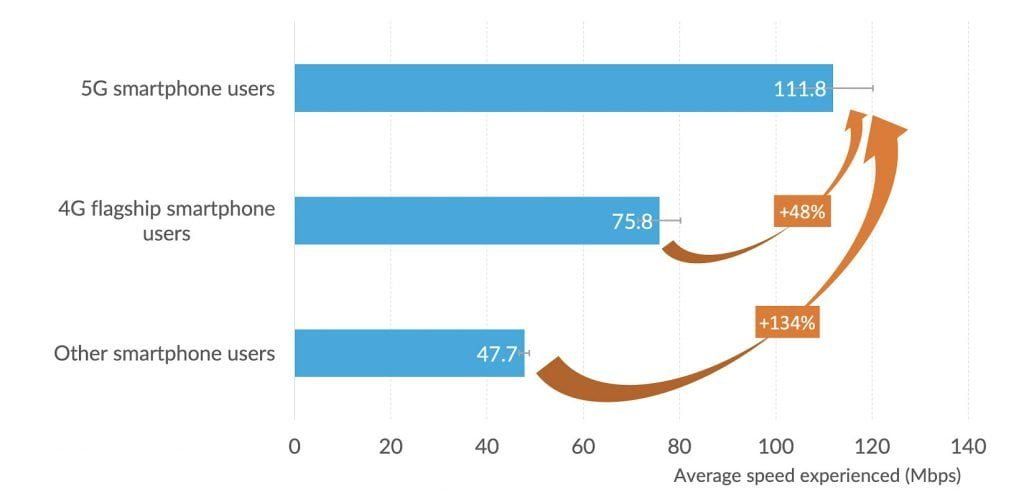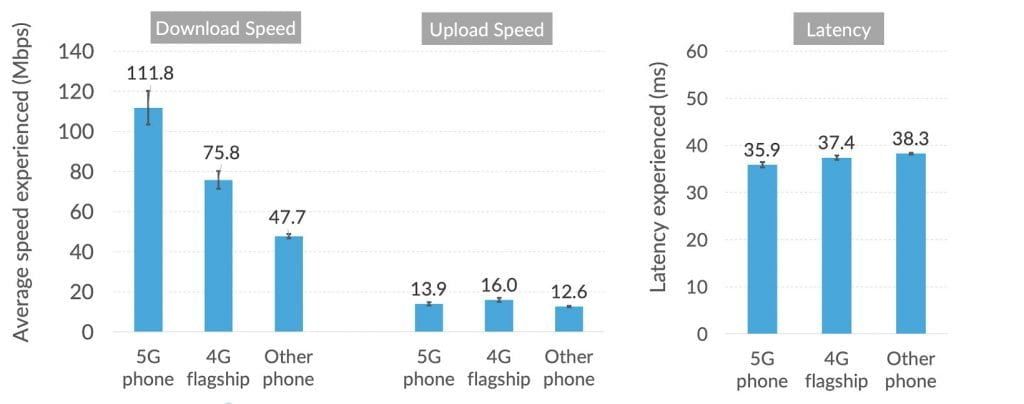5G is here, but how fast is it in the real world? We are a few years away from getting a fast 5G network in Uganda but this obviously has not stopped the developed countries from rolling out this super fast next generation wireless network. According to Opensignal, in the first country to see widespread 5G adoption, South Korea, analytics reveals the average download speed 5G smartphone owners is 111.8 Mbps or 48% faster than users with comparable recent 4G flagship smartphones and 134% higher than other 4G smartphone users. These metrics will likely improve as 5G becomes more mainstream and the early 5G technology matures over the coming months.
However, the maximum speed experienced by 5G smartphone users is much faster than the average download speed. For example in the U.S.,users using the Opensignal app have experienced maximum speeds as high as 1.2 Gbps measured against normal content delivery networks, not special test servers.
By contrast, in South Korea the maximum speed experienced to date is 988 Mbps, which is 8.8 times as fast as users’ average real-world speeds of 111.8 Mbps. Given the speeds experienced in Korean cities were already fast on 4G, this early 5G launch should extend Korea’s leading global position.

South Korea can be a worldwide benchmark
The Korean 5G launch is important for every country launching or planning to deploy 5G because Korea is the first large-scale 5G smartphone launch anywhere globally. In Korea, all three operators launched with a flagship device from the world’s largest smartphone manufacturer, Samsung, across all the largest cities. By contrast, the first U.S. smartphone-based 5G service launched with a smaller scope in just two cities using an add-on 5G module handset from a small manufacturer.
There are lessons from initial 5G markets like Korea for later deployments because 5G is so new and different, and because the technology is still immature. As vendors fix 5G teething issues and refine their solutions, peak and average 5G speeds will improve. And, while some 5G frequency bands are not available in particular countries yet – for example 3.5Ghz in the U.S., mmWave in Europe and Africa – they will be over the next few years and learnings from other countries will help carriers improve these later 5G roll outs.
Opensignal, is only able to simply measure the real-world experience of users to see if one service delivers a better or worse experience than another. And for real 5G New Radio (NR) there are metrics where we see no change in users’ experience, at least for now.
While there is a significant increase in the average download speeds experienced by 5G smartphone users, both upload speeds and latency — a measure of the responsiveness of the network — are similar between 4G smartphone users and 5G smartphone users. This upload and latency finding is what Opensignal would expect at this early stage of the 5G era because initial 5G technology does not yet seek to improve either characteristic.

Read world 5G will get better in the near future
At the moment, 5G smartphone users connect to both a 4G spectrum band and a 5G New Radio (NR) band simultaneously in what is called Non-Standalone Access mode. Effectively, the system is using 5G for raw download bandwidth, but uses 4G for other network functions. When operators launch services based on Standalone Access, 5G smartphones will be able to connect exclusively to a 5G NR signal and latencies should decrease significantly, improving the experience for consumer applications such as online multiplayer games like Fortnite or PUBG, as well as internet-based voice communication like FaceTime, Tango, WhatsApp, etc.
Its expected that the experience of 5G users will change during the course of 2019 as 5G’s coverage improves and vendors resolve initial 5G problems. With such an early technology, only real-world measurements can provide a continuous ongoing measure of how the 5G experience is changing.

